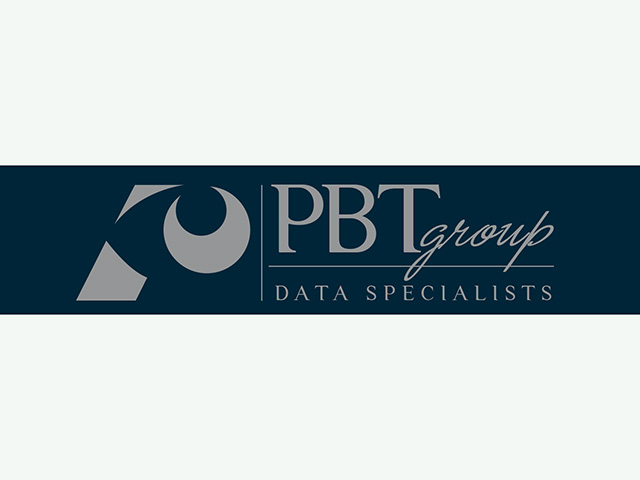Livelier AI: Herald of savvier businesses
By Staff Writer 30 September 2020 | Categories: feature articles
TechSmart Features sponsored by:
The global artificial intelligence (AI) software market is forecast to grow 54% this year to reach $22.6 billion - where AI is predicted to contribute to worldwide economic growth, and where organisations are looking for ways to benefit from innovations in this field especially as they relate to enhancing data insights.
AI is becoming faster and smarter. Already, researchers have created software that borrows concepts from Darwinian evolution to build AI programs that continuously improve without any human input. Of course, a distinction must be made between advanced algorithms and AI. For example, a navigation app that recommends the fastest route between two points relies on the former. There are a finite number of possible routes to follow and the math required is straightforward and predetermined.
Continuous intelligence
Andreas Bartsch, Head of Service Delivery at PBT Group, explains: “Within AI, there are three key trends that will contribute to its acceptance as a more effective way of deriving value from data. The first of these is continuous intelligence (CI).”
CI can be defined as combining data and analytics with transactional business processes and other real-time interactions. It leverages augmented analytics, event stream processing, optimisation, business rules management, and machine learning.
“It comes down to providing companies with a more effective way of conducting data analysis at greater scale, with higher volumes, and in near real-time. Think of CI as having the ability to perform analysis on huge data volumes without requiring any human intervention. It is also unaffected by the complexity of data instead examining it in unbiased ways and creating data stories that become integral to the analytical process,” adds Bartsch.
He explains that CI effectively allows companies to make informed decisions as events occur. It integrates historical and streaming data to deliver insights into not only what is happening now, but why is it happening. For instance, detecting fraudulent activity in real-time and alerting users, stopping breaches, and preventing tampering can save insurers millions of Rands.
Explainable AI
The second trend is that of explainable AI (XAI). XAI is a set of tools and frameworks that help people understand and interpret predictions made by machine learning models. It addresses the challenge of machine learning algorithms that are very ‘black box’ oriented meaning there is not a human understanding of the processes happening on the inside. It is just about the results.
“As can be expected, XAI is about the user experience and receiving the output of any given AI scenario or algorithm and understanding it in the business context. It traces the AI thinking process and makes it understandable for human consumption,” says Bartsch. “The understandability and resulting trust not only provides opportunity for improvement and optimisation, but is ultimately a key success factor in achieving buy-in to the significant benefits AI can derive.
An example of this can be found in healthcare. A use case was built involving precision medicine based on patients’ genetics, past medical history, and family medical history. The XAI system interpreted the data and highlighted a treatment campaign which medical professionals could view and understand how it came to its conclusions.
Responsible AI
The final trend is that of responsible AI which provides a framework for bringing several practices together. These are focused on the potentially disruptive impact of AI especially when it comes to fears around workforce displacement, loss of privacy, potential biases in decision-making, and lack of control over automated systems and robots.
Bartsch indicates that the need for this responsibility has been illustrated during the pandemic. “AI techniques such as machine learning, optimisation, and natural language processing are providing critical data for Governments and healthcare workers which can be discerned into intelligible insights and predictions around the spread of the Coronavirus and the effectiveness of treatment campaigns. Given the life and death reality of this specific example, it is imperative for AI to become more responsible.”
With AI providing an effective way to complement and augment human capabilities, it becomes important for ethical and responsible governance to be applied to AI. According to the World Economic Forum, responsible AI is the practice of designing, building, and deploying AI in a manner that empowers people and businesses, and fairly impacts customers and society.
“AI is here to stay especially given how integrated data analysis has become for effective business operations. Traditionally, the initial thinking for AI adoption has been to offset a significant portion of manual tasks and processes – including manual data analysis – to allow teams to focus on more strategic and intelligible tasks,” continues Bartsch.
“However, as AI becomes livelier – by becoming smarter, faster and more explainable and responsible – it is increasingly being accepted and adopted as the tool or means with which to reach and complete significantly advanced tasks, over a mere ‘replacement’ for the admin-driven and tedious ones. Companies must therefore ensure they remain cognisant of these and other trends and look at ways to integrate them so as to capitalise on these advances to drive further growth in their digital business,” concludes Bartsch.
Most Read Articles

Have Your Say
What new tech or developments are you most anticipating this year?




